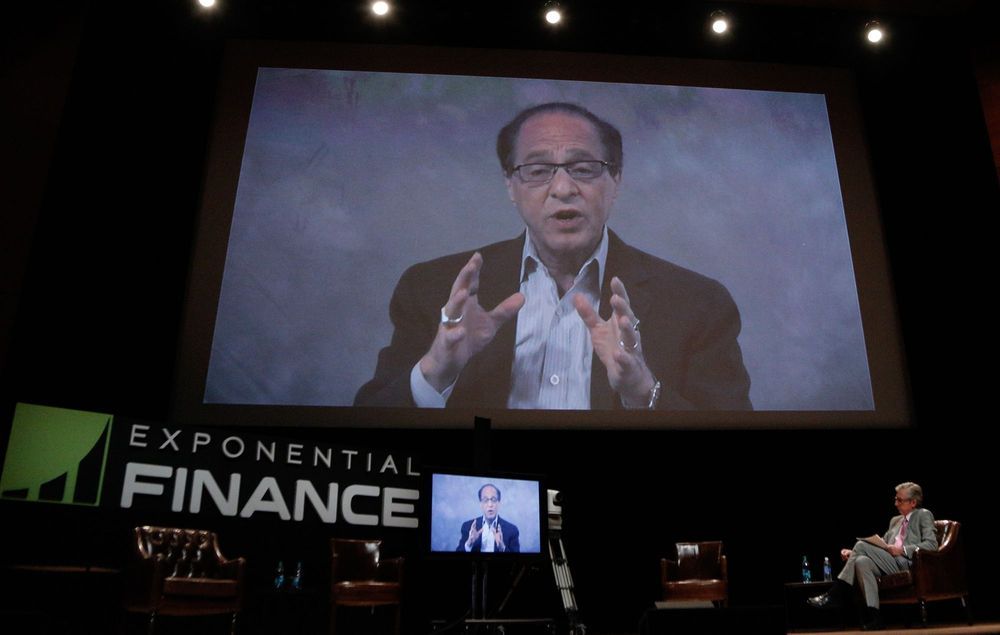Category: finance – Page 132

SpaceX Starlink Will Equal Launch Revenue in 2020 and Will Make Elon the World’s Richest Person by 2023
SpaceX has successfully deployed sixty production versions of the Starlink Satellite. They are targeting six Starlink launches through the next six months. Those six launches will place 360 Starlink satellites into orbit. The pace of Starlink launches will increase with six more launches by the end of April 2020. This will enable SpaceX to generate a lot of revenue for service to North America, Europe and Asia. The revenue will be from reducing latency in financial trading communication.
SpaceX and Elon Musk will be made financially secure by 2023 and will have the $20 billion per year budget of NASA. If Elon has a 30X on his 54% share of SpaceX, then with Elon would have 30 times $10 billion in 2024 (50% of $20 billion in 2024). This means Elon would be worth over $300 billion without including any valuation for Tesla.
If Tesla still had any financial issues, Elon would be able to lend money from SpaceX to Tesla by late 2020 or 2021. Elon used Tesla to buyout Solarcity. In 2018, financial analysts speculated that Elon could his SpaceX stake as collateral in a buyout of Tesla. If SpaceX is worth $100 billion late in 2020 and then $200 billion in 2021, Elon would easily be able to fund a Tesla buyout with his $54 billion and then $108 billion of SpaceX (versus about $15 billion today).

Computers will be like humans by 2029: Google’s Ray Kurzweil
In less than two decades, you won’t just use your computers, you will have relationships with them.
Because of artificial intelligence, computers will be able to read at human levels by 2029 and will also begin to have different human characteristics, said Ray Kurzweil, a director of engineering at Google.
“My timeline is computers will be at human levels, such as you can have a human relationship with them, 15 years from now,” he said. Kurzweil’s comments came at the Exponential Finance conference in New York on Wednesday.

Repair Biotechnologies Raises a $2.15M Seed Round
Great news for Repair Biotechnologies a new startup company developing solutions to age-related immune system decline and heart disease.
In 2018, Reason and Bill Cherman founded Repair Biotechnologies, which, as its name suggests, is a rejuvenation biotechnology company focused on damage repair approaches to aging. The company has recently completed a seed round of investment funding, with a total of $2.15 million being put into the company’s coffers to bolster research and development. Reason described this seed round as follows:
We are very pleased to have the support of noted investors such as Jim Mellon. They are the people who are presently providing the fuel and publicity for ever faster progress in the longevity biotechnology industry.
We are also very pleased to have the support of important non-profit organizations such as the SENS Research Foundation. Non-profit groups are just as important as the venture community when it comes to accelerating progress in this field: they are the ones who establish the path and point the way for each new class of therapy.
Non-profit groups are the ones who undertake the hard work of coordinating and funding overlooked research programs in order to create the conditions necessary for venture capital to pay attention to rejuvenation biotechnology.


Stem cell scientists clear another hurdle in creating transplant arteries
Cardiovascular disease is a major cause of death worldwide, and treating it isn’t easy. The disease wreaks havoc on patients’ blood vessels and can require complex bypass surgery.
Scientists at the Morgridge Institute for Research are working toward a dream of creating artery banks—similar to blood banks common today—with readily-available material to replace diseased arteries during surgery.
The latest work in the lab of Morgridge regenerative biologist James Thomson puts the science one step closer to that goal.

Major Bank: The Immortality Industry Is the Next Hot Investment
Longevity companies have often risen and fallen with little ado. But if these financial experts are correct that biotech companies are poised to start “bringing unprecedented increases to the quality and length of human lifespans,” per CNBC, then we may start seeing serious results out of the industry.
“New Frontier”
Bank of America’s predictions would mean a six-fold increase in the amount of money in longevity companies. In a report to clients reviewed by CNBC, analysts wrote that the human lifespan may soon extend to 100 years.

S-money: Ultra-secure form of virtual money proposed
A new type of money that allows users to make decisions based on information arriving at different locations and times, and that could also protect against attacks from quantum computers, has been proposed by a researcher at the University of Cambridge.
The theoretical framework, dubbed ‘S–money’, could ensure completely unforgeable and secure authentication, and allow faster and more flexible responses than any existing financial technology, harnessing the combined power of quantum theory and relativity. In fact, it could conceivably make it possible to conduct commerce across the Solar System and beyond, without long time lags, although commerce on a galactic scale is a fanciful notion at this point.
Researchers aim to begin testing its practicality on a smaller, Earth-bound scale later this year. S-money requires very fast computations, but may be feasible with current computing technology. Details are published in the Proceedings of the Royal Society A.

The Otso Incident with Donovia in 2030
“If we don’t study the mistakes of the future, we’re doomed to repeat them the first time :(” — Ken M, comedian.
[Editor’s Note: Today’s blog post is an excerpt from Mr. Robert J. Hranek’s short story entitled “Angry Engineer,” submitted to the 2019 Mad Scientist Science Fiction Writing Contest. The underlying premise of this contest was that, following months of strained relations and covert hostility with its neighbor Otso, Donovia launched offensive combat operations against Otso on 17 March 2030. Donovia is a wealthy nation that is a near-peer strategic competitor of the United States. The U.S. is a close ally of Otso and is compelled to intervene due to treaty obligations and historical ties. Among the many future innovations addressed in his short story, Mr. Hranek includes a “pre-mortem” in the form of two dozen lessons learned, identifying potential “mistakes of the future” regarding the Battle for Otso, so that we’re not “doomed to repeat them the first time!” Enjoy!]
The U.S. responded to Donovia’s invasion of Otso by initiating combat operations against the aggressors on 1 April 2030 — April Fools’ Day. Thousands of combatants died on both sides, mostly on ships; hundreds more were wounded, primarily from the land battle, and an unverifiable number of casualties occurred worldwide due to the sabotage of power grids and other infrastructure. An accurate civilian count was impossible in the chaos of reestablishing power, computer, and financial systems worldwide.